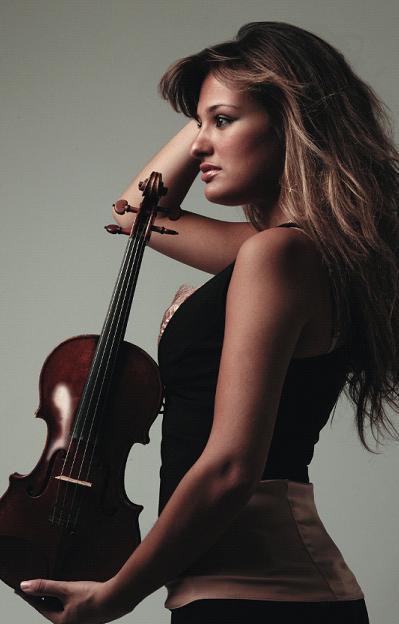There was one main reason for travelling to Edinburgh’s Usher Hall on Friday to hear the Royal Scottish National Orchestra (RSNO), but there were two reasons for leaving completely fulfilled, writes Garry Fraser.
The draw was the inclusion in the programme of Korngold’s violin concerto, played by the one and only Nicola Benedetti.
The satisfaction was the performance of this attractive work and that of a Beethoven symphony that concluded the programme.
Both were brilliant, and their interpretation and delivery left a charming Sinfonietta by Zemlinsky in the shade.
The Korngold was akin to the RSNO going to the movies, and if anyone was familiar with soundtracks for films of the 1930s they could be excused for humming along.
The melodies, construction and orchestration were on a par with any symphonic composer you could name, and the overall effect was highly entertaining.
With the accent more on the melodic rather than the virtuosic, this gave Ms Benedetti the chance to show off her beautiful tone and lyrical strengths, particularly in the upper register an area where power and passion is sometimes hard to bring over. This she did superbly.
The cadenza in the opening Moderato nobile did give her the chance to demonstrate the flair she is renowned for, as well as the rondo-like finale, but the emphasis throughout was on the lyrical side of things and it was her interpretation of this that struck me most.LyricismThe lyricism displayed in the concerto continued in Nicola’s encore.
Normally you associate works by Paganini with flair and panache, but this Saraband was a thing of ethereal beauty, perfectly phrased and superbly floated.
Not only did it make a stunning tailpiece to her overall performance, it was also the perfect way to commemorate 150 years of Italian unification, as requested pre-concert.
The other reason for the evening being such a joy was the performance by the orchestra of Beethoven’s Fourth Symphony.
This was one of the best I’ve heard of any of the composer’s nine symphonies, and the catalyst in all this was Walter Weller, the RSNO’s conductor emeritus.
His familiarity with the work and his interpretation led to a spell-binding performance.
The opening adagio could have been described as ponderous, but it led into a vivace that was brightness personified. The adagio was something to die for and the third movement was Beethoven at his best.
The finale scurried along in marvellous style, with orchestra and conductor as one.
